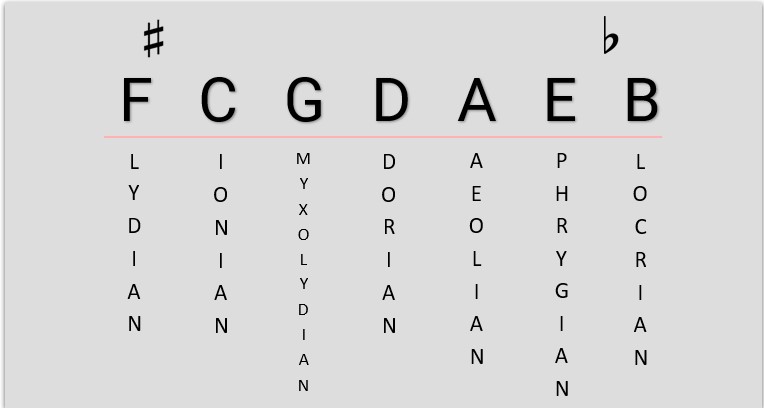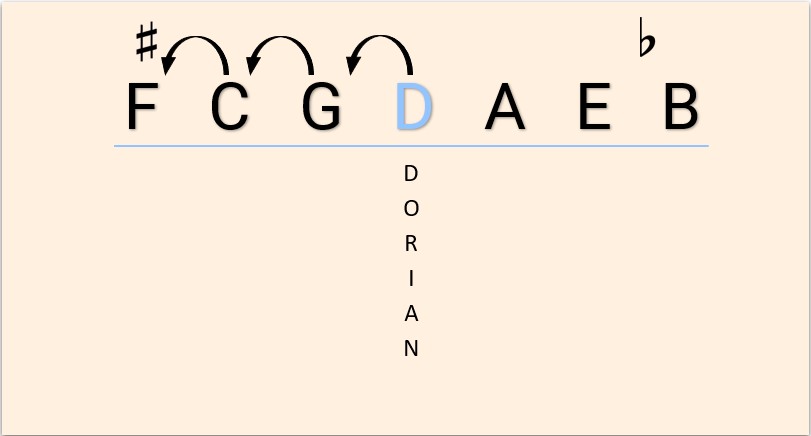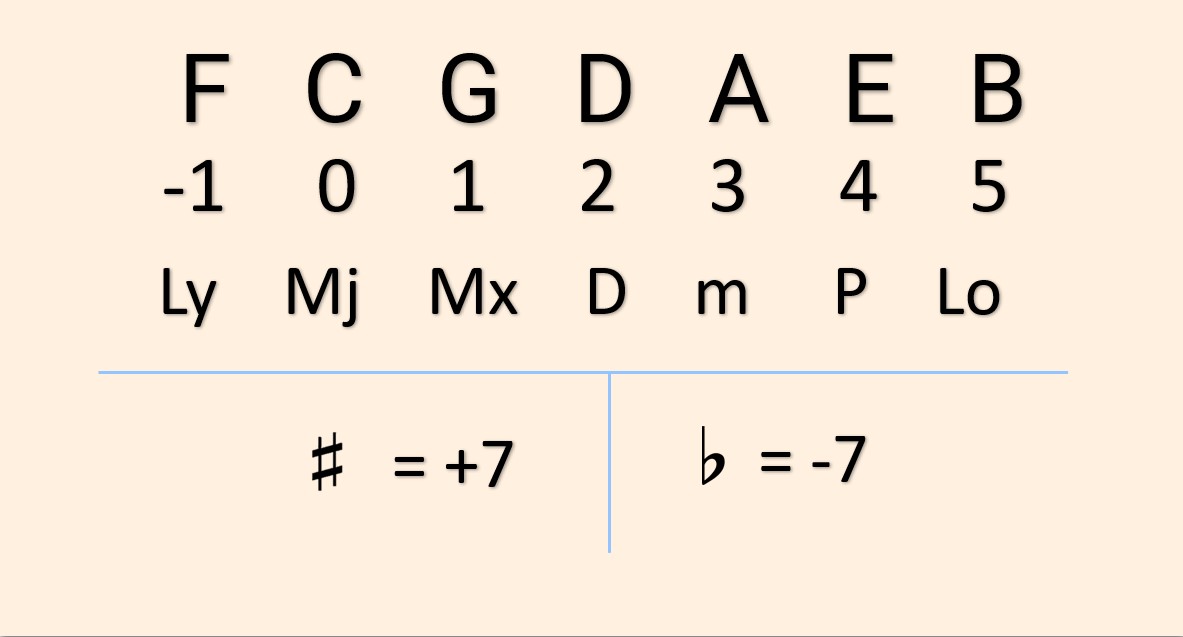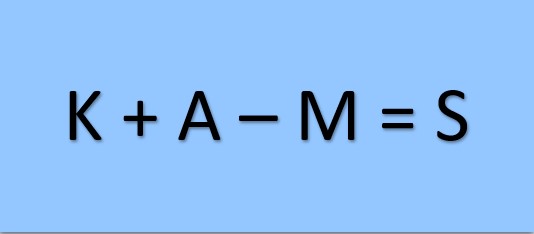Modal Signatures Finder
Modulate quickly
So How Does it Work?
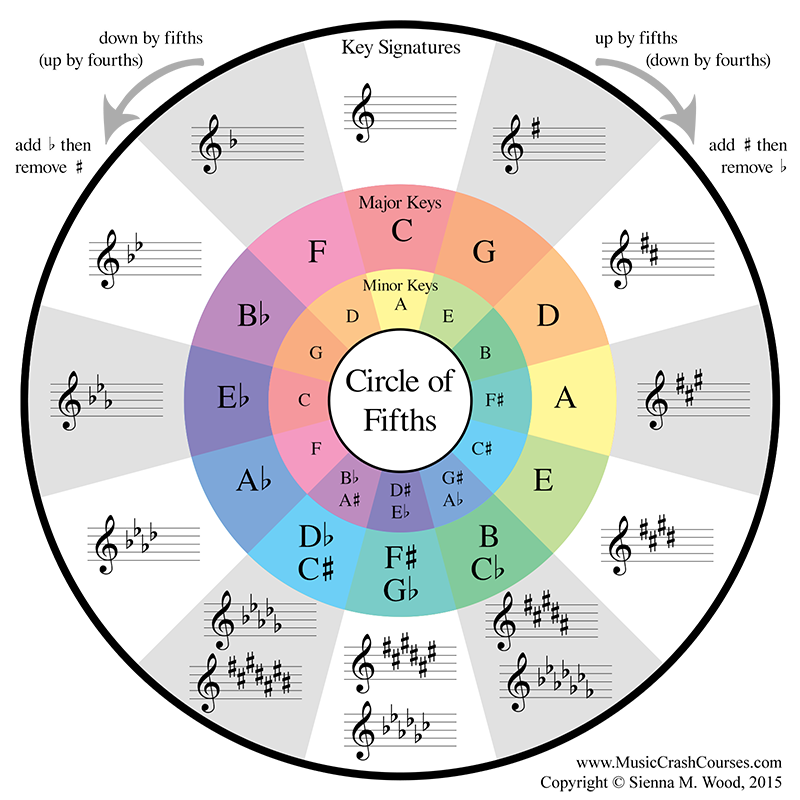
The Circle of Fifths
The circle of Fifths is introduced as a tool to find
and learn the key signatures of any major and minor key. But its uses expand well beyond
just major and minor. Using the circle, one can find the key signatures of any key in any
tonality.
After studying the Circle, I soon realised that it
has a repeating pattern of notes in a loop which are arranged in the same order as the
sharps or flats. When we move clockwise in the Circle we add sharps in the order of FCGDAEB,
and while moving counter-clockwise the order of flats is BEADGCF. As you can see, they are
the same notes in reverse order. And these same notes appear inside the circle in the same
order as well, just with some accidentals along the way.
So I tried to come up with an efficient
alternative.
First let's see an easy to use Chart of Fifths that I came up with, before
exploring the method I used for the calculator.
To find the key signature of a major key:
- Start at C and count your way
up to the key
- If you move to the right of C, the number of steps is the number of
sharps in the key signature; if you move left of C, then it's the number of flats
- If the key
has any accidentals (say F# Major) then move in the direction of that accidental (right for # and
left for b) and loop when you reach the end of sequence (move from B to F).
When you loop, add an accidental to all the notes in the chart (if
you go from B to F, add a # else add a b) and keep moving till you land on your key. So, F# major
will be 6 steps from C moving to the right, which means that F# has 6 sharps in its key signature.
To find the key signature of any key in any mode:
- In the chart find the mode of the key. Ionian is another
name for Major and Aeolian is commonly called Minor.
- Count up from the note just above the
specified mode and count to the required key. If you move right, then the number of steps are the
number of sharps in the key signature, and if you moved to the left then the number of steps are the
number of flats in the key signature.
- When you loop, add an accidental to all the notes in
the chart (if you go from B to F, add a # else add a b) and keep moving till you land on your key.
Let's Take an Example to Understand this Better
Find the key signature of Bb Phrygian
As the mode is Phrygian, we start by finding the key above
Phrygian in the chart, which is E.
So, starting from E, we
count our steps to the left as Bb is a 'flat key'. After 5 steps we reach F
which is the end of sequence, so we loop around after adding a flat to each note.
After 6 steps we have reached Bb. This gives the key signature to be 3 flats.
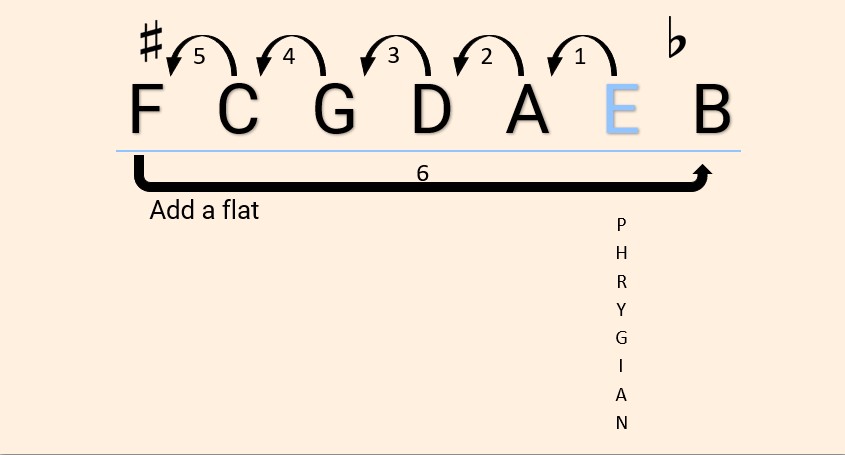
Math Time!
There is another way to find the key signature of any key
in any mode using Math. This method is based on the circle of fifths and the chart of fifths method,
just with numbers and a single equation. Which is why this method is slower to do mentally, but easy
for computers. So, I used the math method while coding in the modal signature finder
calculator.
We'll use four variables to describe the key and its key signature:
K = The
tonic note of the key (For F# Minor, K will be F)
A = The accidental of the key (For F# Minor, A
will be #)
M = The mode of the key (For F# Minor, M will be Aeolian)
S = This is the key
signature of the key (For F# minor, S will be 3 sharps)
The Formula!!
By rearranging the formula any missing variable can be
found.
If you know that the key signature is 4 flats and the mode is Phrygian, then the key can
be worked out as:
K + A - M = S
K = S + M - A
K = (-4) + 4 - (-7)
K = 7
Whenever
K is more than 5, subtract 7 to get the note value.
If K is less than -1, add 7 to get the note
value.
Thus, K = 0 Which is the key of C
Thus C Phrygian has 4 Flats in its key
signature.
